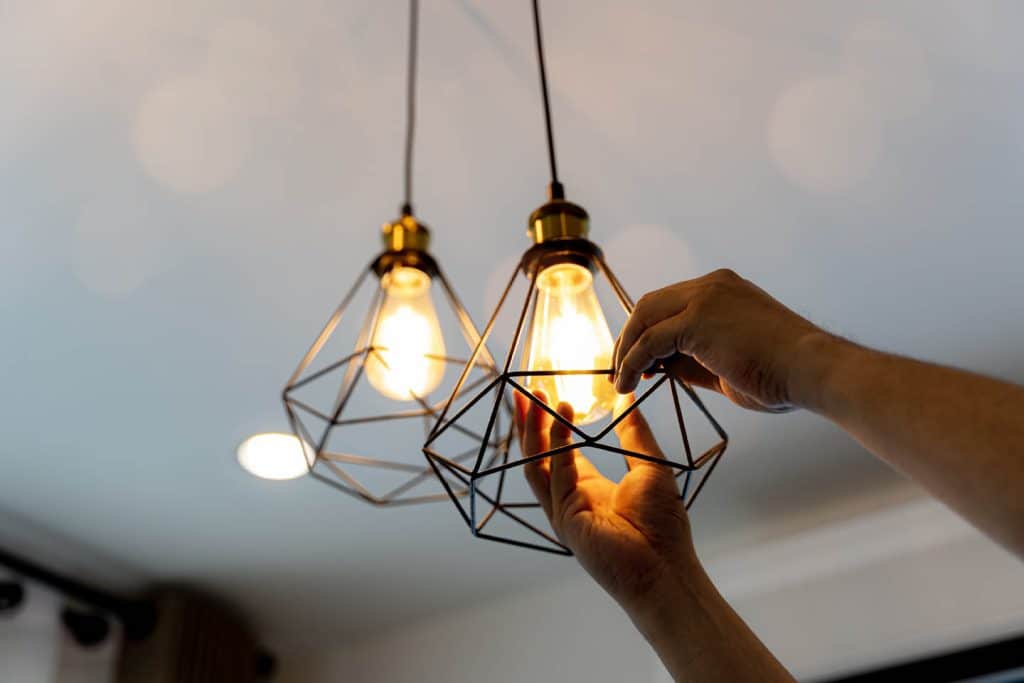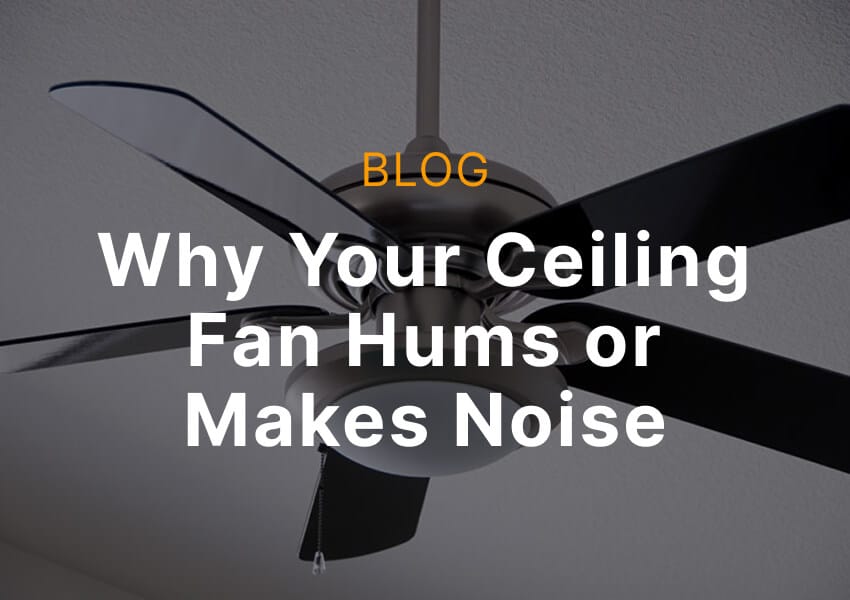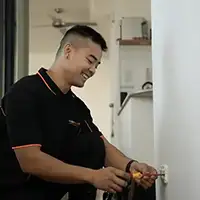It’s strange seeing LED lights keep glowing when turned off, but this issue is surprisingly common in many Australian homes. Instead of switching off completely, your lights may faintly glow or flicker for a few seconds.
While it might seem harmless, that small afterglow could indicate a wiring, switch, or driver issue that needs professional electrical services. LEDs use far less power than traditional bulbs, which makes them sensitive to even minor electrical currents. Understanding what causes this and how to stop it is essential for your safety, efficiency, and peace of mind at home.
Understanding Why LED Lights Glow After Switch Off
Even when your switch is off, you might notice your LEDs glowing faintly or flickering in the dark. Understanding why this happens helps you identify whether it’s harmless or a sign of a deeper electrical problem in your home’s wiring system.
What actually happens
LEDs don’t work the same way as traditional bulbs. They use electronic drivers that convert current into light, which means even a small trace of voltage can make them glow.
This happens because LED circuits are extremely energy-efficient, so they react to tiny residual currents left in the line. In many Australian homes, this faint light doesn’t mean danger, it simply shows how sensitive LEDs are to small power leaks or leftover charges.
Common misconceptions
Many people assume glowing LEDs mean the bulb is faulty, but that’s rarely true. It’s more often due to wiring characteristics or an incompatible switch. Another myth is that glowing LEDs are unsafe; in reality, they just show that your circuit may not be isolating power completely. However, if the glow becomes brighter or persistent, it’s time to consult a residential electrician.
Signs to watch for
You might notice your LEDs shining softly at night or flickering slightly after turning them off. In other cases, the glow lingers for a few seconds before fading away. These symptoms suggest either small current leaks, outdated dimmer switches, or the early stages of a component issue.

The Most Common Causes of LED Lights Glowing When Turned Off
There are several reasons LED lights keep glowing when turned off, and most come down to how your electrical system manages power. Each cause relates to how small amounts of current continue to move through the circuit even after the switch is off. Identifying which one applies to your home can save you time, energy, and unnecessary replacements.
Residual current flow
The most frequent cause is residual current causing LED glow. Even after the circuit is switched off, a minimal amount of electricity can still travel through the line. LEDs only need a tiny charge to emit light, so that faint glow becomes visible in dark rooms.
This often happens in homes with long wiring runs or shared neutral connections, where electricity can loop back through other appliances. While not dangerous, it’s best to have an electrician confirm your wiring is correctly grounded.
Dimmer incompatibility
If you use dimmer switches, the glow might be caused by incompatible dimmer switch LED lights. Older dimmers were designed for high-wattage incandescent bulbs, not low-power LEDs.
These outdated switches sometimes allow a trickle of electricity to flow, keeping the LEDs faintly lit even when off. Upgrading to an LED-compatible dimmer can usually solve this problem instantly and improve overall brightness control.
Wiring or connection faults
Sometimes, a faulty wiring fault LED lights faint glow is the culprit. Loose terminals, worn insulation, or cross-wired circuits can leak current into the lighting line. This not only causes afterglow but can also shorten bulb lifespan.
Because diagnosing wiring issues involves live circuits, it’s important to contact licensed electricians who can safely inspect and repair the connections in line with Australian standards.
Faulty LED driver or component
A LED driver issue after switch off can also explain persistent glow. LED drivers regulate voltage to the bulbs, and if one stores charge or fails to discharge properly, it may release energy slowly after power is cut. Replacing the driver or upgrading to higher-quality fittings usually resolves this issue, ensuring your lights function correctly and switch off completely.

Why This Matters for Safety and Energy Efficiency
A faint glow might seem minor, but it’s often your electrical system’s way of signalling that something isn’t working as efficiently as it should. Understanding why LED lights keep glowing when turned off helps prevent wasted power, equipment wear, and potential electrical safety risks.
Hidden electrical risks
Even a small current passing through your lighting circuit could point to a wiring or isolation issue. Over time, this can lead to electrical stress on switches or drivers. In severe cases, it may cause overheating or insulation damage, especially in older homes.
It’s always best to have a qualified electrician test your system to ensure it meets Australian wiring standards and properly isolates the circuit when switched off.
Wasted energy and lifespan
When LED lights glowing when switched off continue drawing current, they use unnecessary electricity. While the cost impact is small, the continuous trickle of power shortens LED lifespan and increases your overall energy footprint.
Modern lighting should turn off completely, not just dim slightly in the dark. Checking for energy leaks ensures your LEDs perform efficiently and last as long as they should.
Safety compliance
Persistent glow can signal an underlying fault that breaches safety standards. Australian homes are governed by strict regulations to prevent residual currents and improper wiring.
Ensuring your system aligns with these requirements protects you, your property, and your appliances. If you notice a consistent faint glow LED lights when off, don’t ignore it, have a professional electrician inspect your setup to keep it compliant and safe.
How to Fix or Prevent LED Lights From Glowing When Turned Off
Fixing the issue of LED lights that keep glowing when turned off starts with identifying whether it’s caused by wiring, dimmers, or the lights themselves. Most of the time, these are simple problems that a qualified electrician can diagnose and correct quickly. Here’s what you can do before and after seeking professional help.
Check your switches
Begin with your wall switches, especially if they are dimmers or smart switches. Older models may not completely cut power to low-wattage LEDs. If you suspect an incompatible dimmer switch LED lights issue, upgrade to one designed specifically for LED fittings. These modern dimmers regulate voltage more precisely and stop small amounts of power from flowing after you switch the light off.
Inspect connections
Loose or corroded terminals can allow minimal current to pass even when the circuit is off. A quick visual check might reveal damaged wiring or poor insulation, but electrical testing should always be handled by a professional.
If you are unsure, it is safer to call an expert who can locate and repair faults properly. They can also detect a wiring fault LED lights faint glow before it causes long-term damage.
Replace components
Sometimes the issue lies in the light fitting itself. A defective driver or capacitor might release stored energy slowly after switching off, keeping the light faintly on. Replacing the light or driver can eliminate the LED ghosting effect in homes and ensure your fixtures switch off fully. Always choose quality fittings that meet Australian electrical standards for reliability and safety.
Call a licensed electrician
If the problem persists, schedule an electrician check LED lights glowing when off. A licensed electrician can test your circuits, measure voltage leakage, and make sure everything complies with national wiring codes.
They can also identify what causes LED lights to keep glowing and provide tailored solutions for your property. Regular maintenance prevents minor faults from developing into costly repairs later.

When to Call a Professional Electrician
Sometimes, the only way to resolve persistent light glow is through professional testing. If your LED bulbs glowing after power is turned off continues despite replacing switches or fittings, it’s time to get expert help. A licensed electrician can trace small voltage leaks that are invisible to the eye and use diagnostic tools to confirm whether your home’s wiring is performing safely.
You should also call a professional if you notice your lights flashing, dimming unexpectedly, or glowing brighter over time. These may indicate larger circuit issues, not just harmless afterglow. Experienced electricians can determine what causes LED lights to keep glowing and ensure your electrical system complies with Australian safety standards.
Final Thoughts
Seeing your LED lights keep glowing when turned off can be confusing, but the solution is usually simple once you know the cause. Whether it’s wiring, a switch fault, or a driver issue, these problems can be fixed quickly by a licensed electrician. Ignoring the glow could lead to energy waste or safety concerns.
By understanding how your lighting works and getting expert advice, you’ll keep your system efficient, compliant, and worry-free. The right professional can make sure your LEDs switch off completely and perform exactly as they should.
Need Reliable Local Help? Call Powerhub Electrical Today!
If your LED lights keep glowing when turned off, it’s time to call the experts. Powerhub Electrical provides same-day service across Epping and Parramatta. Our licensed electricians will inspect, repair, and ensure your lighting system is completely safe. Call 0400 332 331 today and get $50 OFF your first service.





